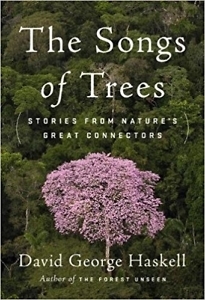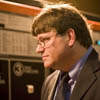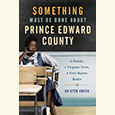The March of Science
In The Songs of Trees, David George Haskell writes with a poet’s ear and a biologist’s precision
On April 22, thousands of Americans joined a nationwide “March for Science,” an event designed, organizers said, to “acknowledge and voice the critical role that science plays in each of our lives.” The same could be said of The Songs of Trees, the second book from Sewanee biologist David George Haskell.

Haskell’s first book, The Forest Unseen, a finalist for the Pulitzer Prize, is an extended meditation on a one-meter circle of old-growth forest on the Cumberland Plateau. The new book expands that meditation to the web of all life on Earth, as seen—or more specifically heard—through a dozen individual trees spread across the globe. Its chapters move from the dizzying crest of a magnificent Ceibo in a South American rainforest to a hardy Callery Pear at Broadway and 86th Street in Manhattan.
In his first book, Haskell emphasized the need for direct, personal observation in understanding nature. In this book, he extols the value of listening. He describes the cacophony of droplets focused and amplified within a rainforest canopy, a sound “like fine metalwork” ringing from windblown cones atop a balsam fir in the Canadian wilderness, and the swir of bees and wasps on the April anthers of a maple tree steps away from his own front door. Chapter by chapter he listens to a dozen species of trees, seeking to describe “the physicality of the sound, the stories that brought sound into being, and our own bodily, emotional and intellectual responses.”
 Like Rachel Carson’s Silent Spring and Stephen Jay Gould’s Wonderful Life, The Songs of Trees is greater than the sum of its parts: it forces readers to consider complex, interrelated networks of the natural world, the scope and sweep of evolution, and the measurable effects of humanity on both. And it does so via some of the most musical sentences penned by any contemporary writer of prose or poetry.
Like Rachel Carson’s Silent Spring and Stephen Jay Gould’s Wonderful Life, The Songs of Trees is greater than the sum of its parts: it forces readers to consider complex, interrelated networks of the natural world, the scope and sweep of evolution, and the measurable effects of humanity on both. And it does so via some of the most musical sentences penned by any contemporary writer of prose or poetry.
Near the centerpoint of the book, amid the fossilized redwoods of Florissant Fossil Beds National Monument in Colorado, Haskell dwells specifically on climate change. The area now supports ponderosa pines, but the fossils—preserved by a massive volcanic flow 38 million years ago—present a detailed picture of life in a hot world where carbon-dioxide concentrations, Haskell writes, “were at least double modern values, perhaps ten times as high.” In two paragraphs at the heart of the book, he addresses the state of climate discourse in the current political era, tying the subject to broader themes of the connectedness of all living things:
The petrified stump, a stony piece of flotsam carrying the memory of the past, reminds us of Earth’s unnegotiable law. What exists today will not exist tomorrow. Climate change is one expression of this ephemerality. All the climate has ever done is change: cadences and glissandos of temperature and rainfall, sometimes bending slowly, sometimes screeching in jolts. This is the neverstill of rocks, air, life, water. Next to the petrified wood, the ponderosa cries in an igneous wind, prey to onslaughts of beetles or drought, caught in the change that humans have wrought. Downstream the effects of this change: slop buckets of glass shards and forest mud, thimblefuls of mountain slide.
No one marches in Washington to protest biogeochemical modulations or revolutions, yet I’ve joined thousands on the streets to protest the lack of adequate policies to slow human-induced climate change. What cause have we to divide relationships to the worlds in this way? If we choose not to inhabit a world of separation, if we believe ourselves to belong here just as much as pines and redwoods, where do we root our ethics?
Ultimately, he concludes that the “answer depends, at least in part, on the kind of Earth to which we think we belong.” In each chapter of The Songs of Trees, Haskell defines the kind of Earth he envisions by including deep, vivid excursions into the biology of a particular tree, as well as that tree’s various interactions with humanity. The world’s oldest bonsai, for example, barely escaped the atomic blast of Hiroshima before traveling in its fourth century to a Washington, D.C., museum. An olive tree in Jerusalem shades three cats amid city blocks that have seen centuries of battle. A hunk of American maple that vibrates, when tapped, with a sound that is “bright, open and lean-muscled, quick” becomes the base of a specific violin with deep personal resonance for the author.
As Haskell describes the actual and metaphorical sounds associated with specific trees, his theme dovetails with the musical quality of his own prose. He explains that he listens for more than “our voices and those of our family.” He is also trying to “touch a stethoscope to the skin of a landscape, to hear what stirs below.” In the process, he is also making an argument for why science matters and for the importance of listening to and protecting the natural world to which each of us is inextricably linked. The Songs of Trees pulses with the quiet yet powerful sound of not one leaf rustling, but of billions.

Michael Ray Taylor teaches journalism at Henderson State University in Arkadelphia, Arkansas. He is the author of several books of nonfiction and coauthor of a textbook, Creating Comics as Journalism, Memoir and Nonfiction.


